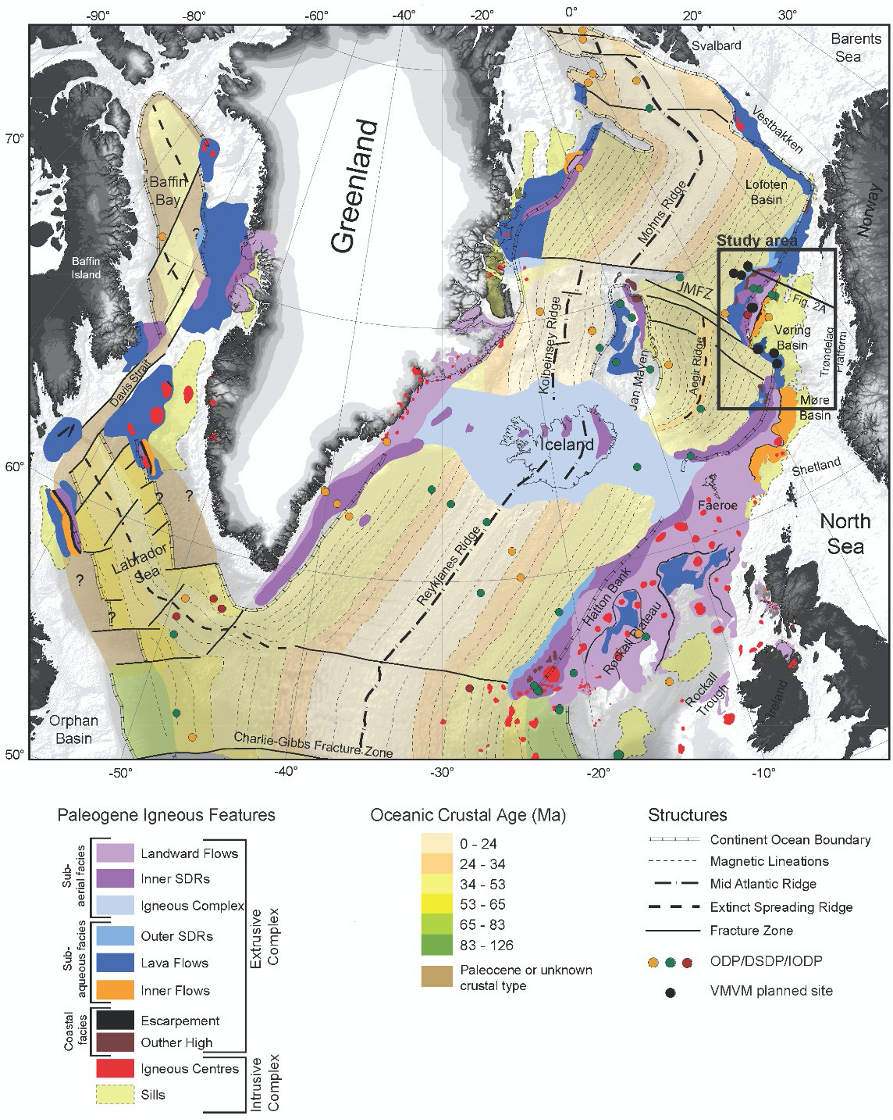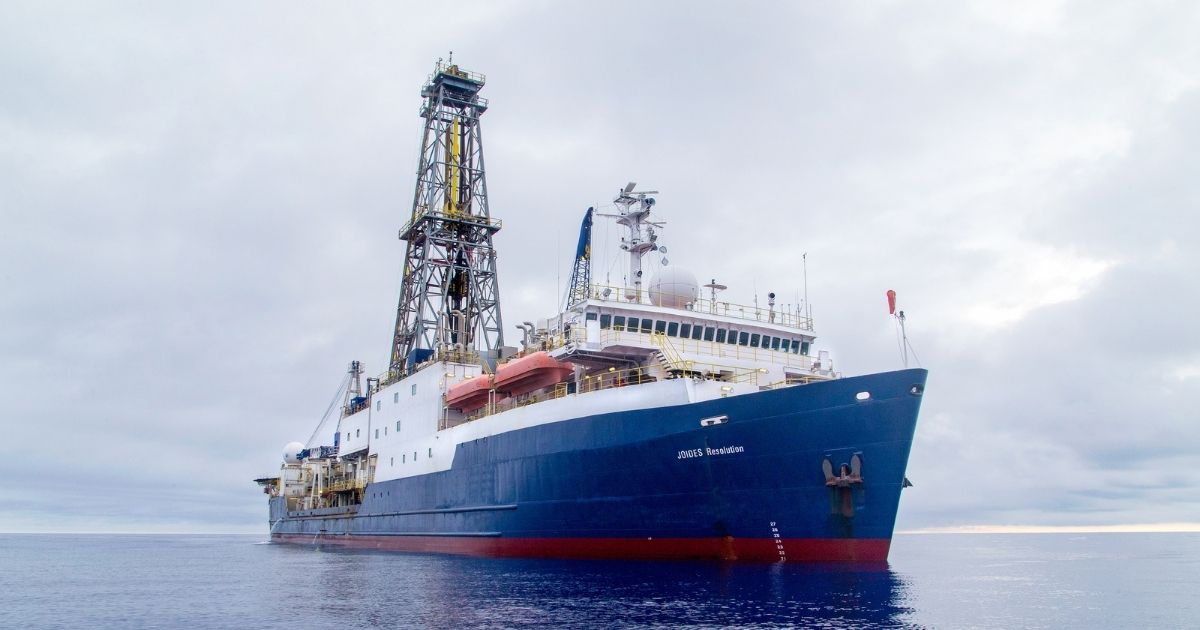The theory of plate tectonics is only 50 years old, and it is still poorly understood how continents break apart.
This summer, an international team of researchers intends to drill the edge of the Norwegian continental shelf to learn about the opening of the Atlantic Ocean and the vast environmental consequences this had. The expedition is funded by the Integrated Ocean Discovery Program (IODP) and will use the research vessel Joides Resolution. The expedition is jointly led by Prof. Sverre Planke from the University of Oslo and Prof. Christian Berndt from GEOMAR Helmholtz Centre for Ocean Research Kiel.
On Iceland, one can still observe the last after-effects of the volcanism that accompanied the opening of the Atlantic Ocean when Greenland and Europe broke apart. Active volcanoes stretch across the country like a string of pearls. Kilometer-long deep fissures with rifts dozens of meters high can be seen with the naked eye. Every year, the Eurasian and American plates move a little further apart. This process started more than 56 million years ago when the North Atlantic was born. Over a period of about one million years, one of the most powerful volcanic eruptions in the Earth’s history occurred. According to current knowledge, this volcanism warmed the Earth`s climate by about five degrees globally. However, many details of the opening of the Atlantic Ocean between Greenland and Norway are still unknown. Volcanic rocks in the seafloor bear testimony, but they are often difficult to access. In order to gain a better insight into the history of the formation of the Atlantic, an international team of scientists wants to collect extensive sample material by drilling off the coast of Norway with the research vessel Joides Resolution this summer.
“The IODP expedition offers a unique opportunity to really understand how the huge volcanic eruptions during the opening of the North Atlantic affected the climate at that time and what lessons we can learn for future climate change”, says Christian Berndt, co-chief scientist of the expedition from GEOMAR Helmholtz Centre for Ocean Research Kiel.
“Our hypothesis is that volcanic and magmatic activity was instrumental in triggering a 150,000-year extreme global warming event known as the Paleocene-Eocene Thermal Maximum. This global warming of 4-5 °C may have been caused by the release of greenhouse gases from heated sediments off the coast of central Norway”, explains Dr Morgan Jones from the University of Oslo.
 Geological map of the northeast Atlantic. The working area off the coast of Norway is marked. From Huismans et al. 2019.
Geological map of the northeast Atlantic. The working area off the coast of Norway is marked. From Huismans et al. 2019.
The scientists intend to drill and to obtain sample material from the volcanic rocks that were formed at that time. A total of nine boreholes are planned at depths of up to 800 meters. The drilled material will then be analyzed geochemically and dated. Christian Berndt is convinced that in combination with the wealth of reflection seismic data collected by the oil industry over the last 40 years, the borehole information will provide an unprecedented picture of the formation of a large eruptive province during the opening of an ocean basin. A side aspect to be investigated, is the question how well these rock layers can be used to store carbon dioxide. If this can be done cost-effectively, it may help slow down today's global warming.
The dimensions of the eruption at the time were huge. “We estimate this to be several million cubic kilometers of lava, enough to cover the whole area of Germany with five kilometers of lava”, explains Sverre Planke from the University of Oslo, co-chief scientist of the expedition. “As part of this IODP expedition, we would like to figure out why this volcanism was so anomalous. It is a unique opportunity for us to understand the formation of enormous volcanic eruptions from the Earth's mantle and how such magmatism might have triggered global warming and mass extinctions in the past”," says the Norwegian scientist.
Information about the expedition:
- IODP 396 - Mid-Norwegian Continental Margin Magmatism
- Joides Resolution
- Co-chief Prof. Dr. Christian Berndt und Dr. Sverre Planke
- 6. August – 6. Oktober 2021
- Reykjavík, Iceland to Kristiansand, Norway
- Expedition page IODP: https://iodp.tamu.edu/scienceops/expeditions/norwegian_continental_margin_magmatism.html



